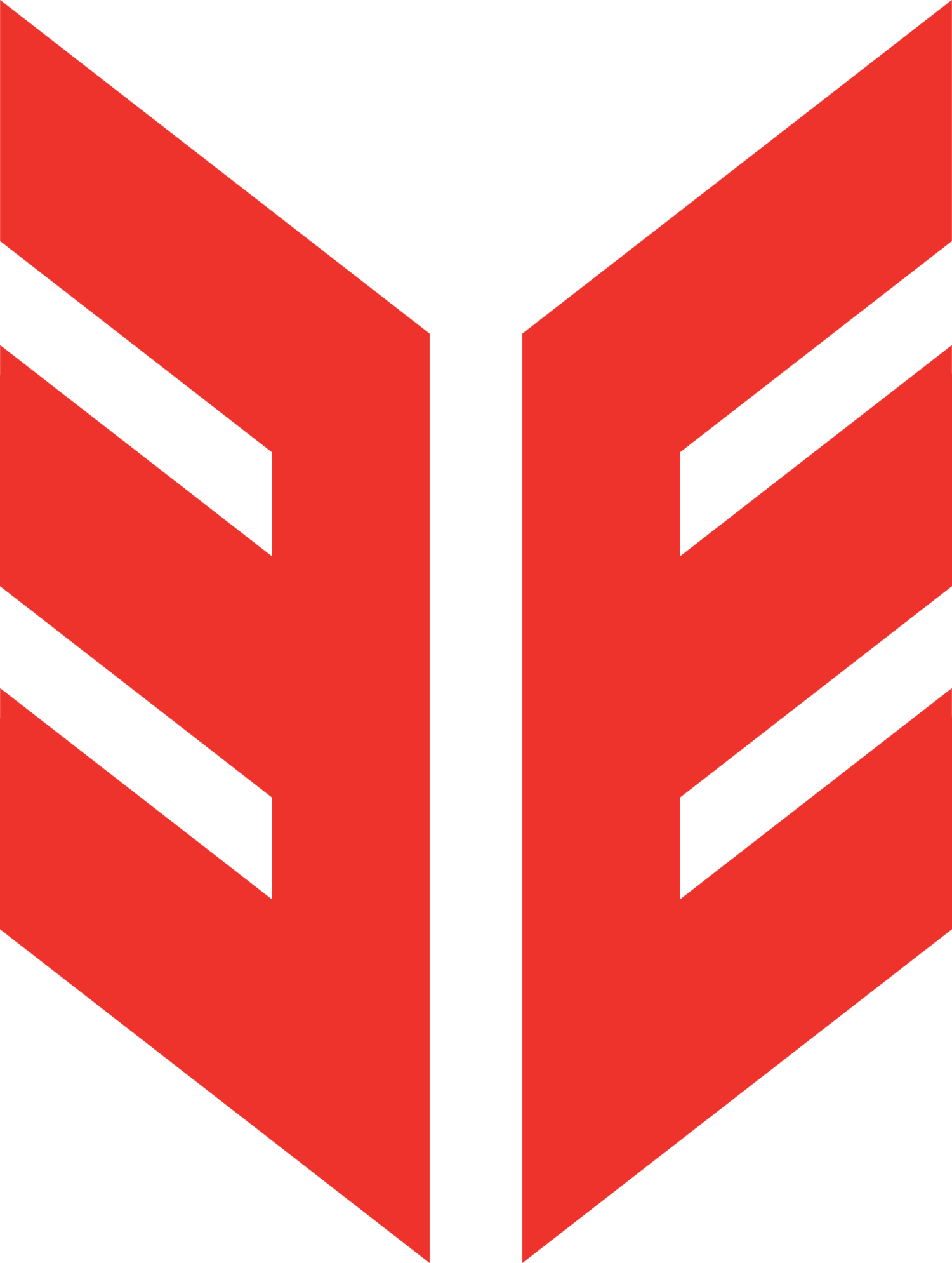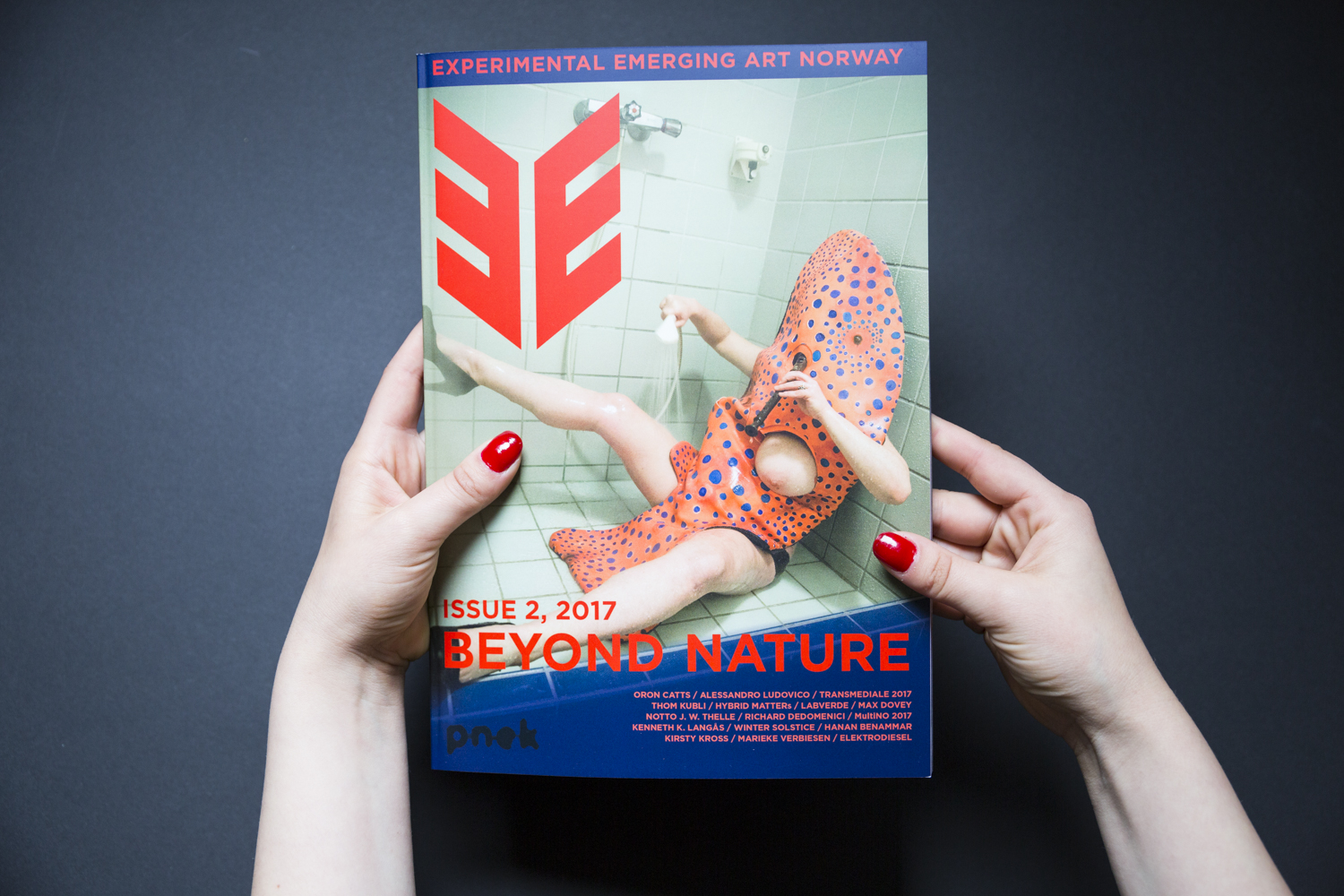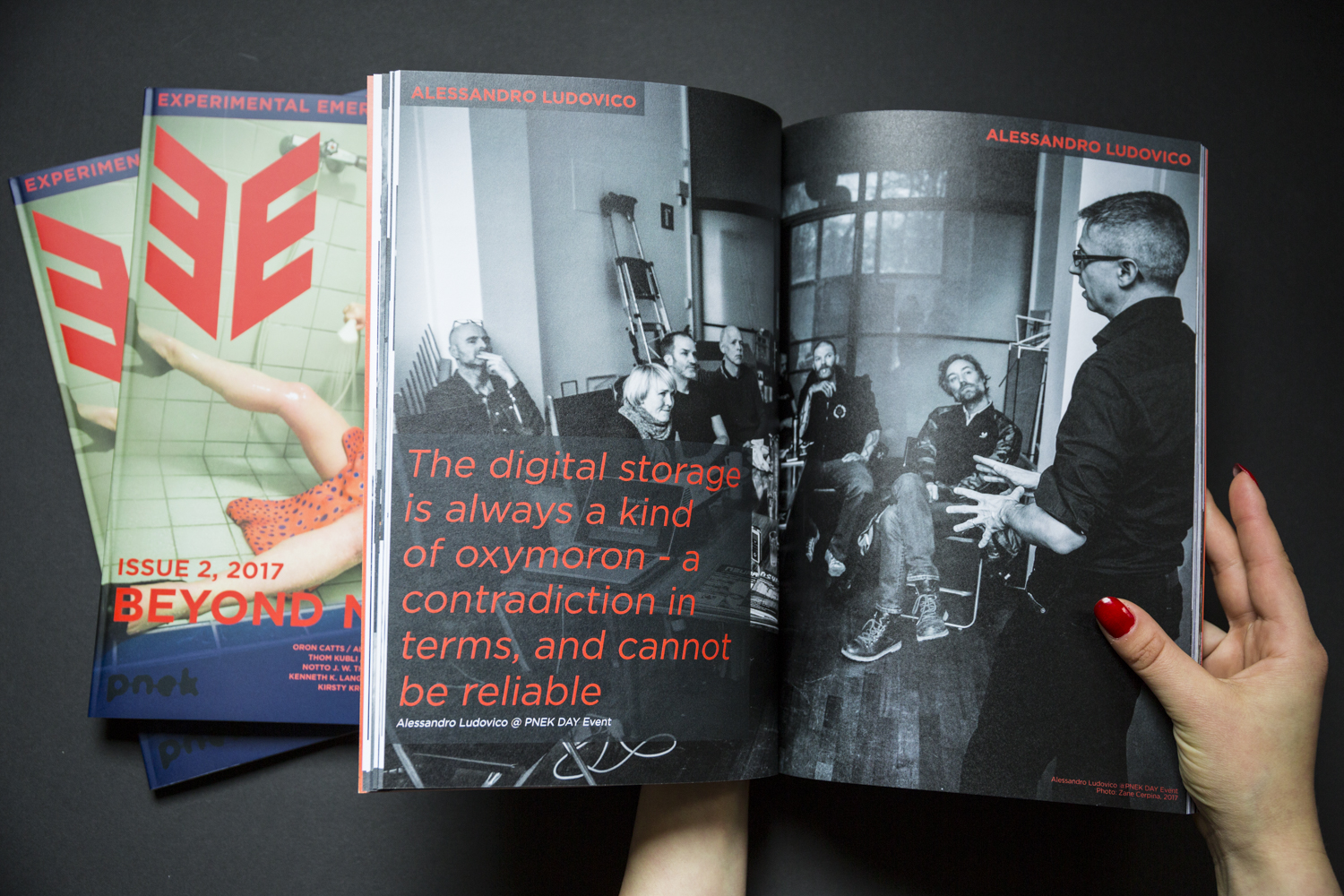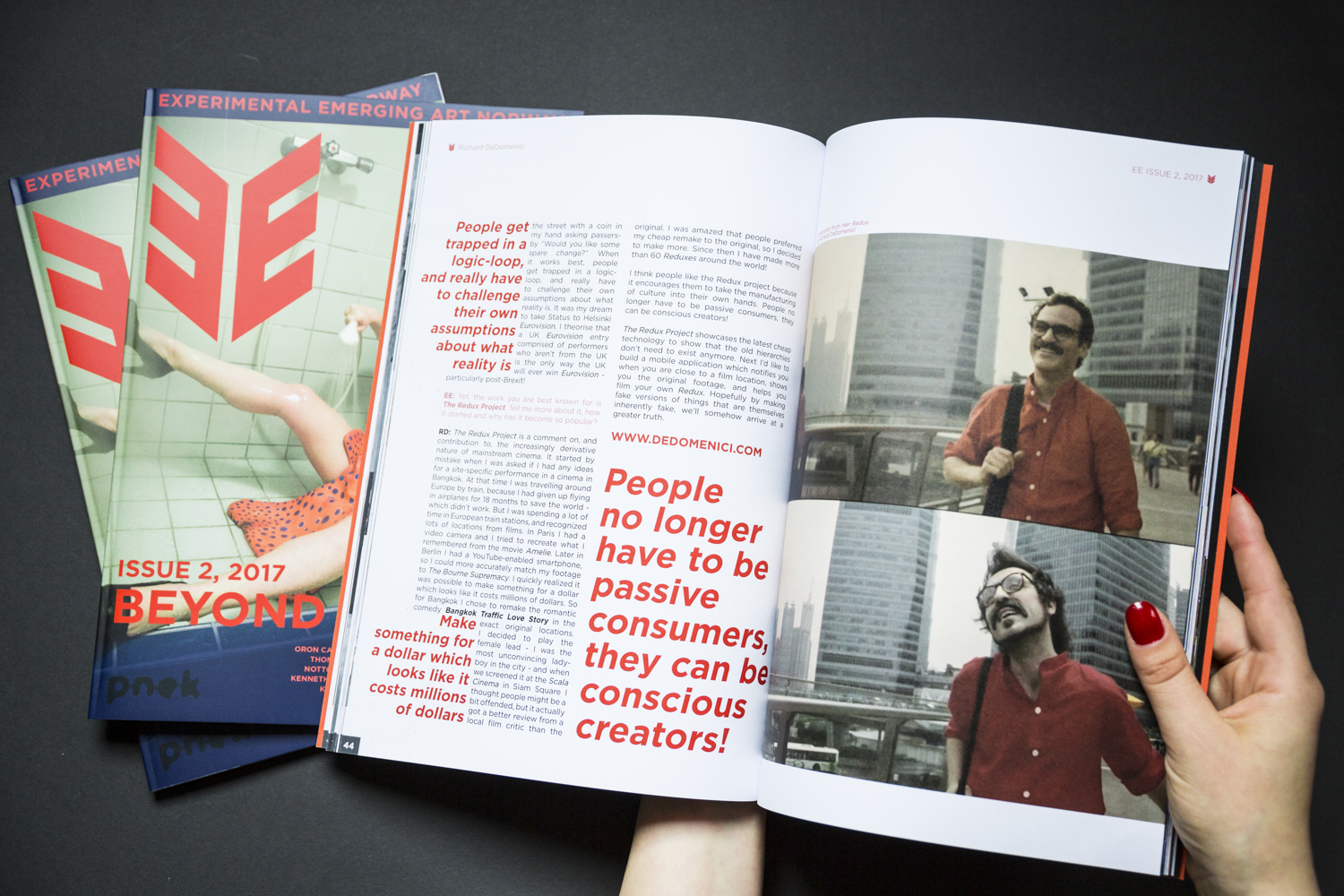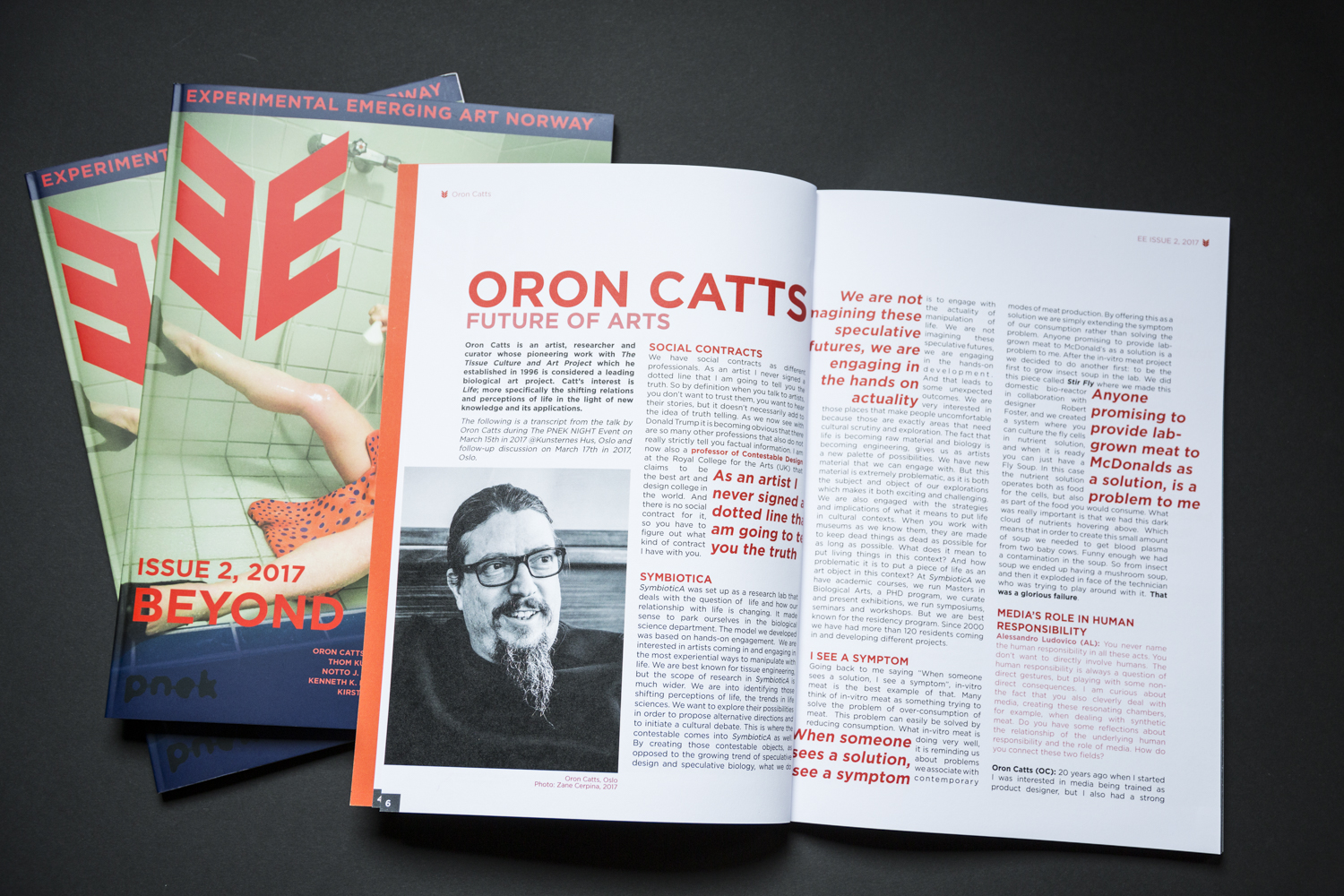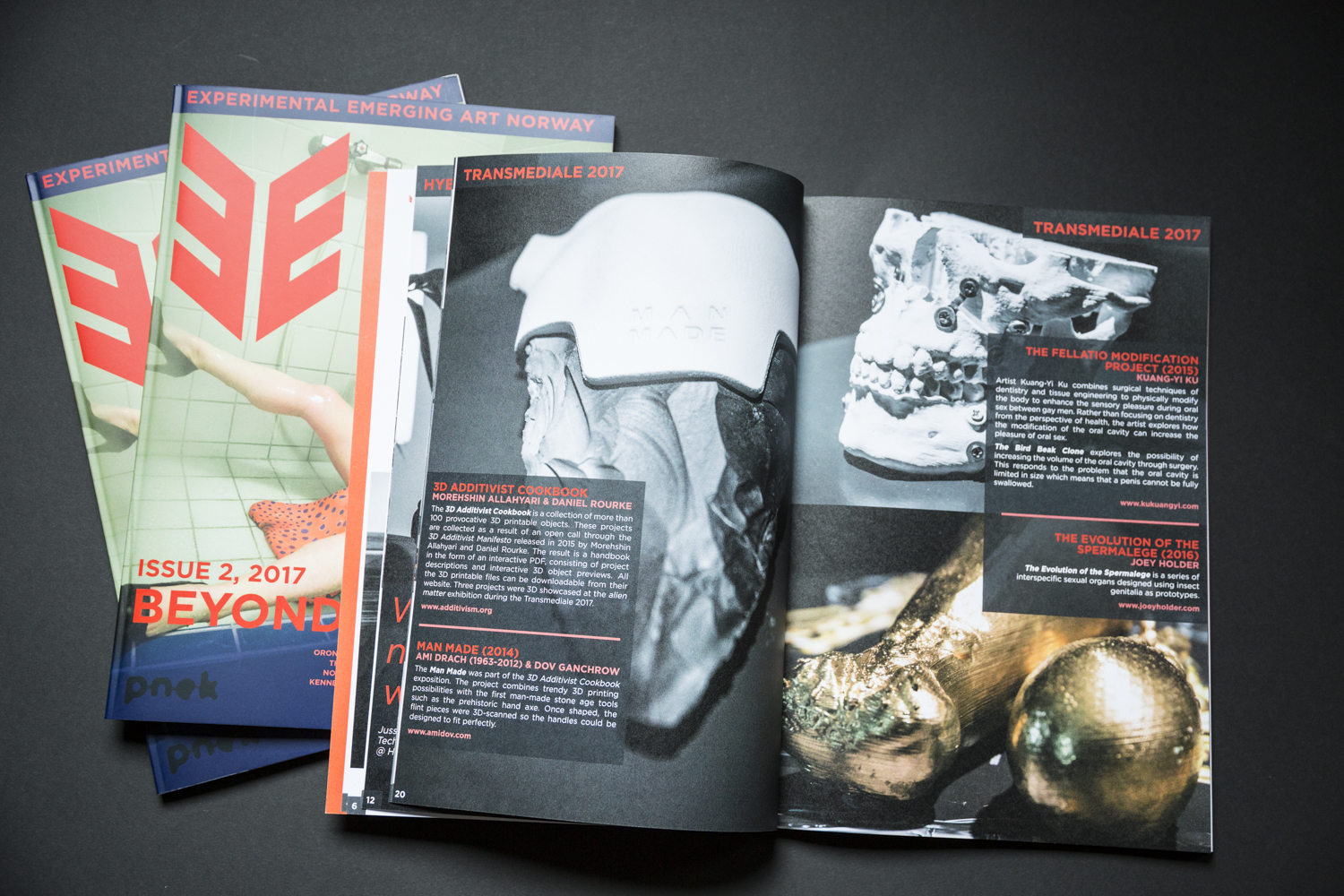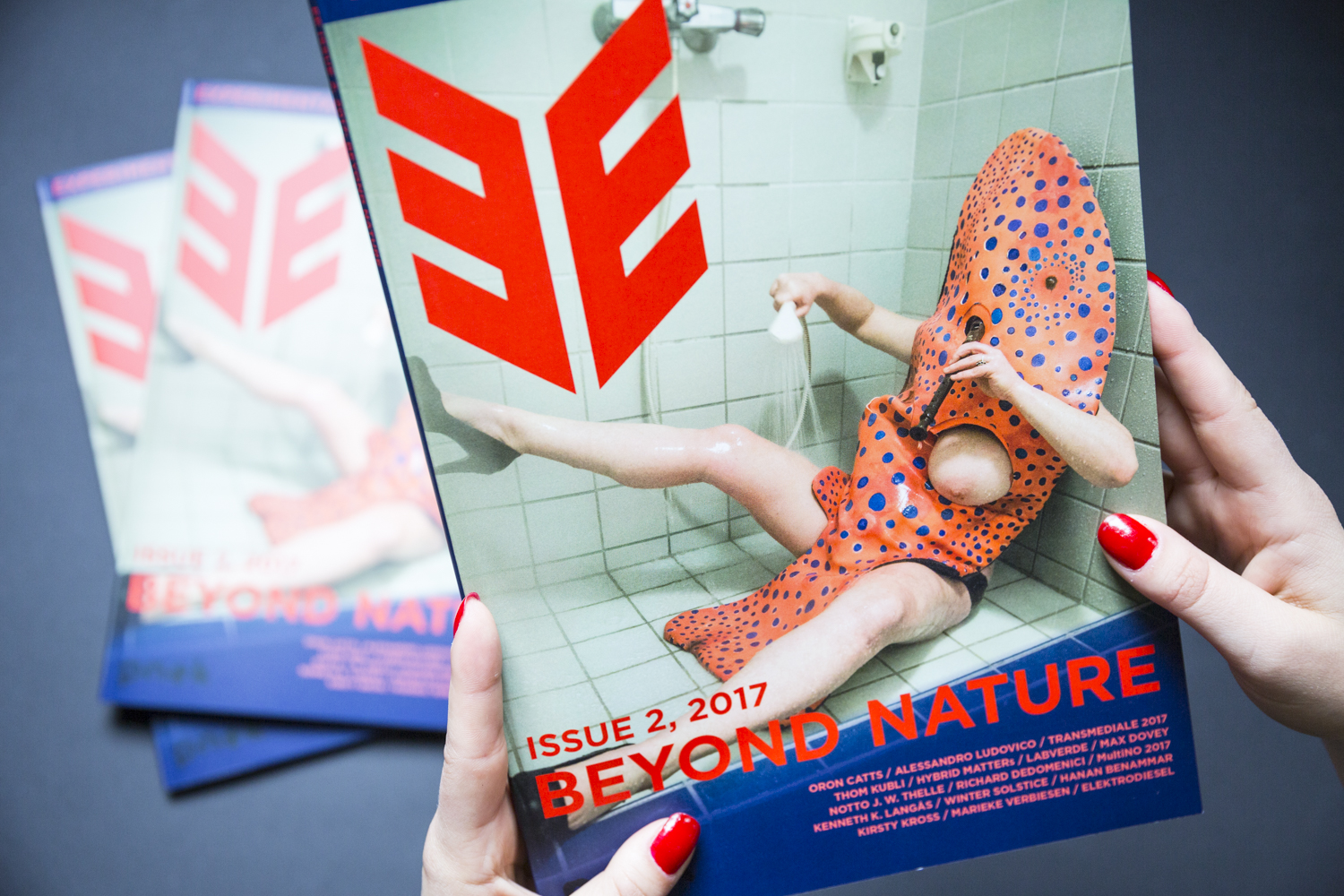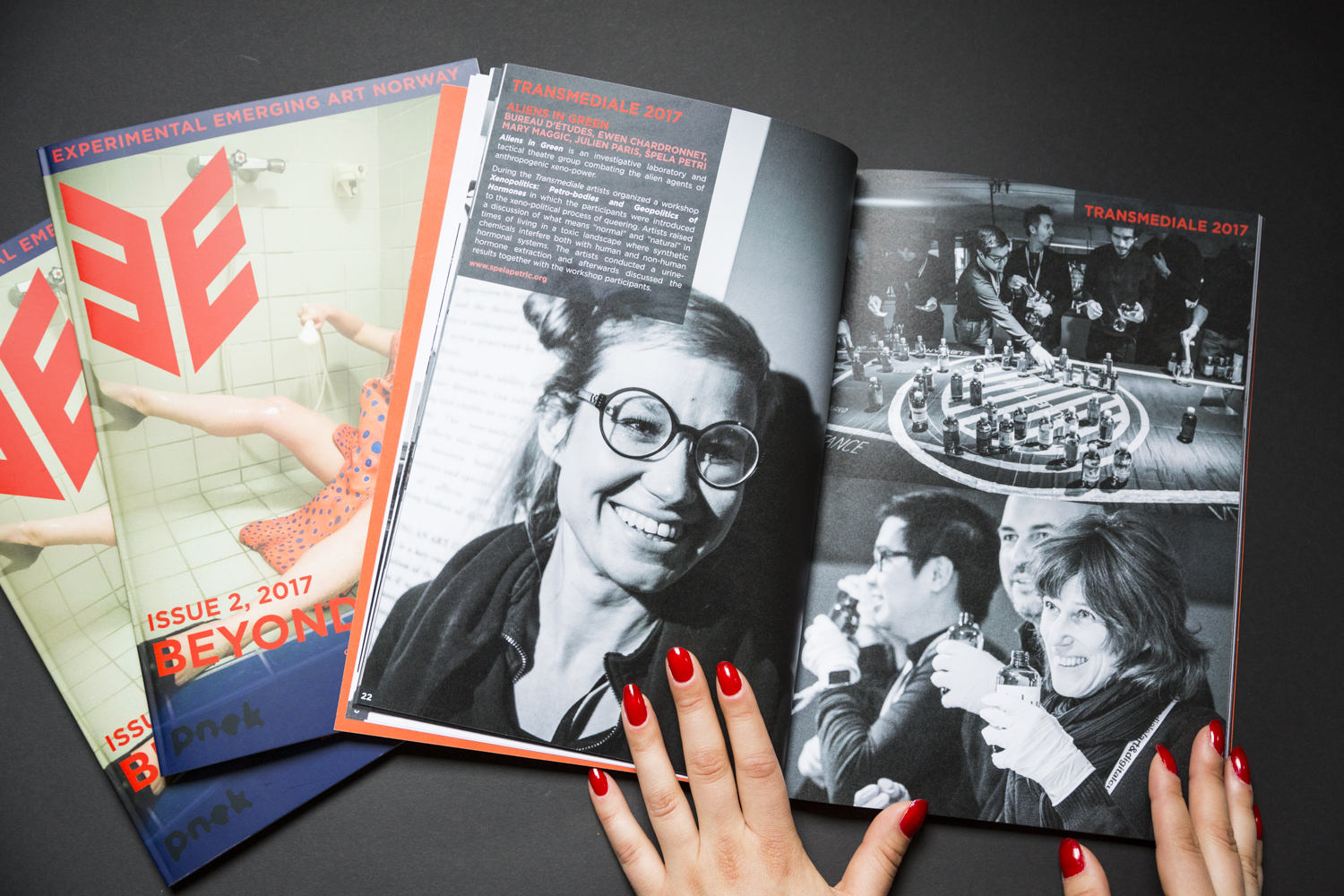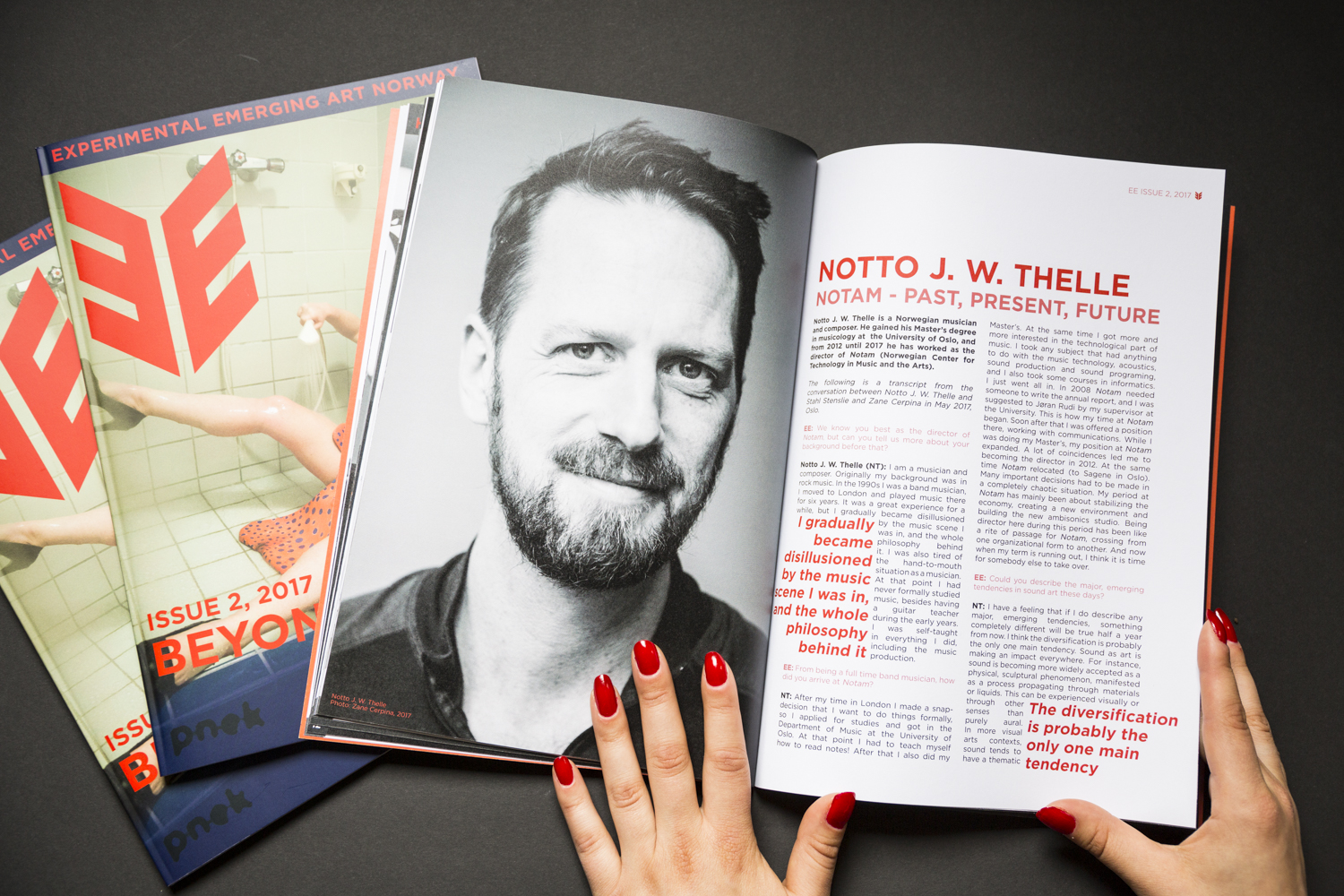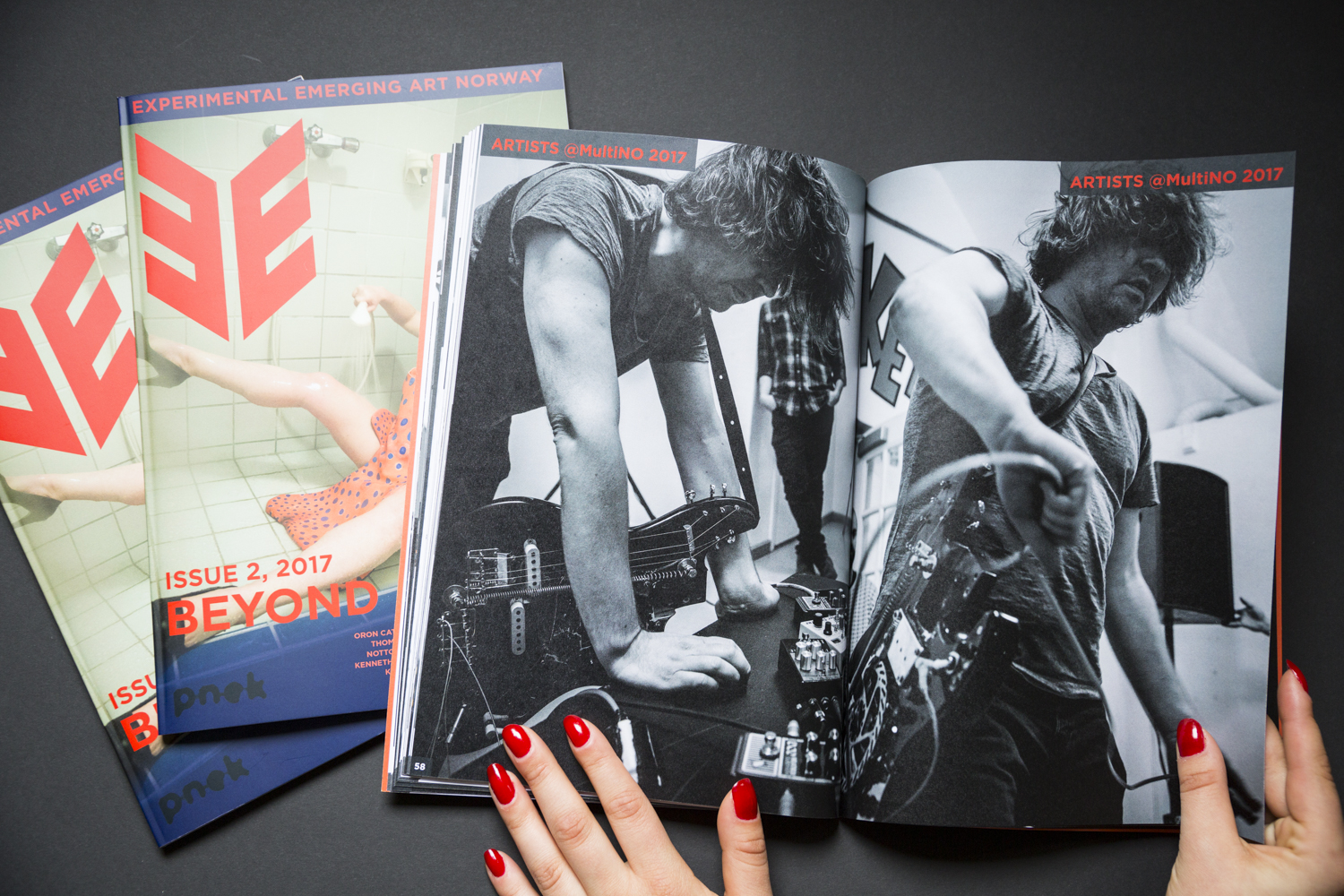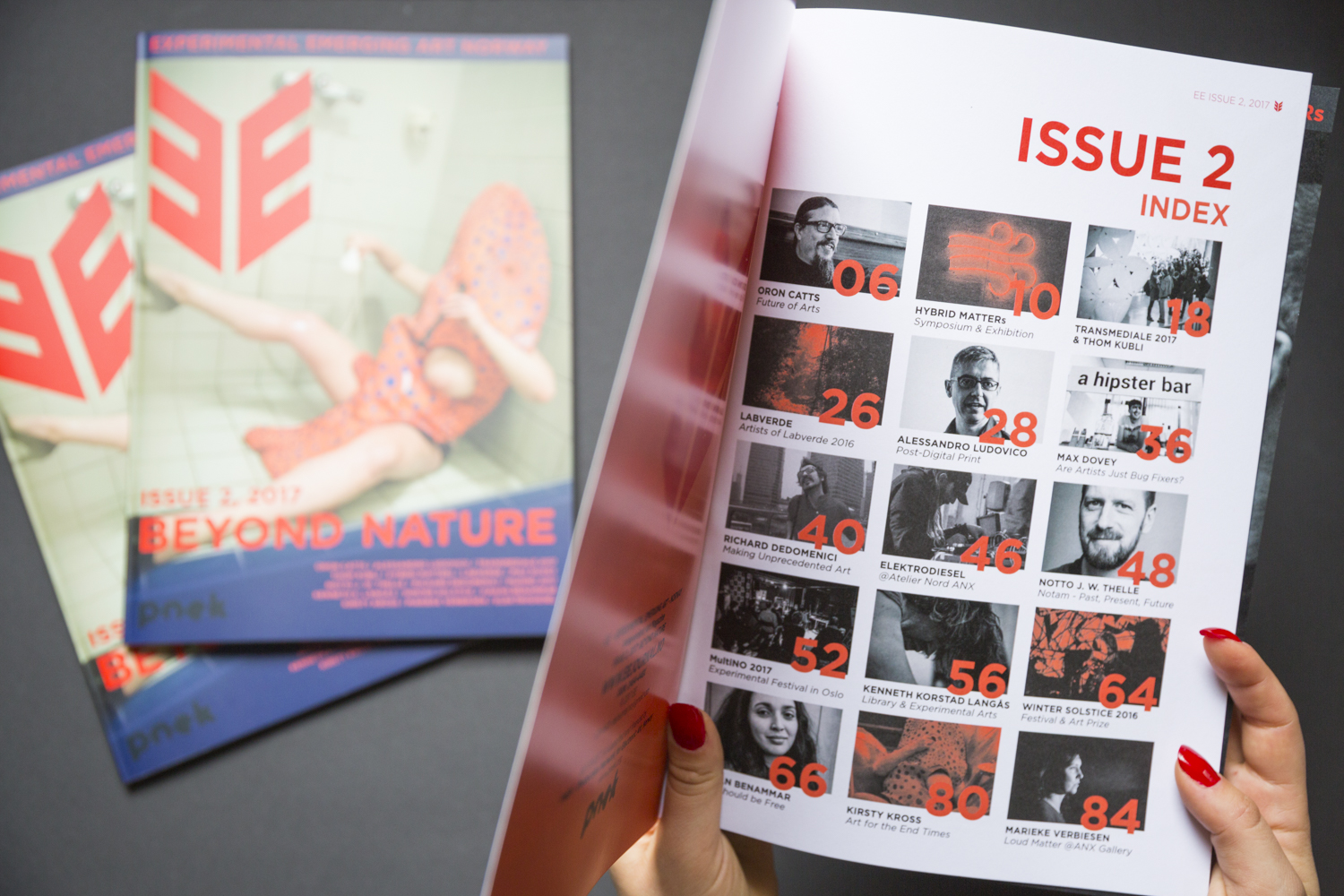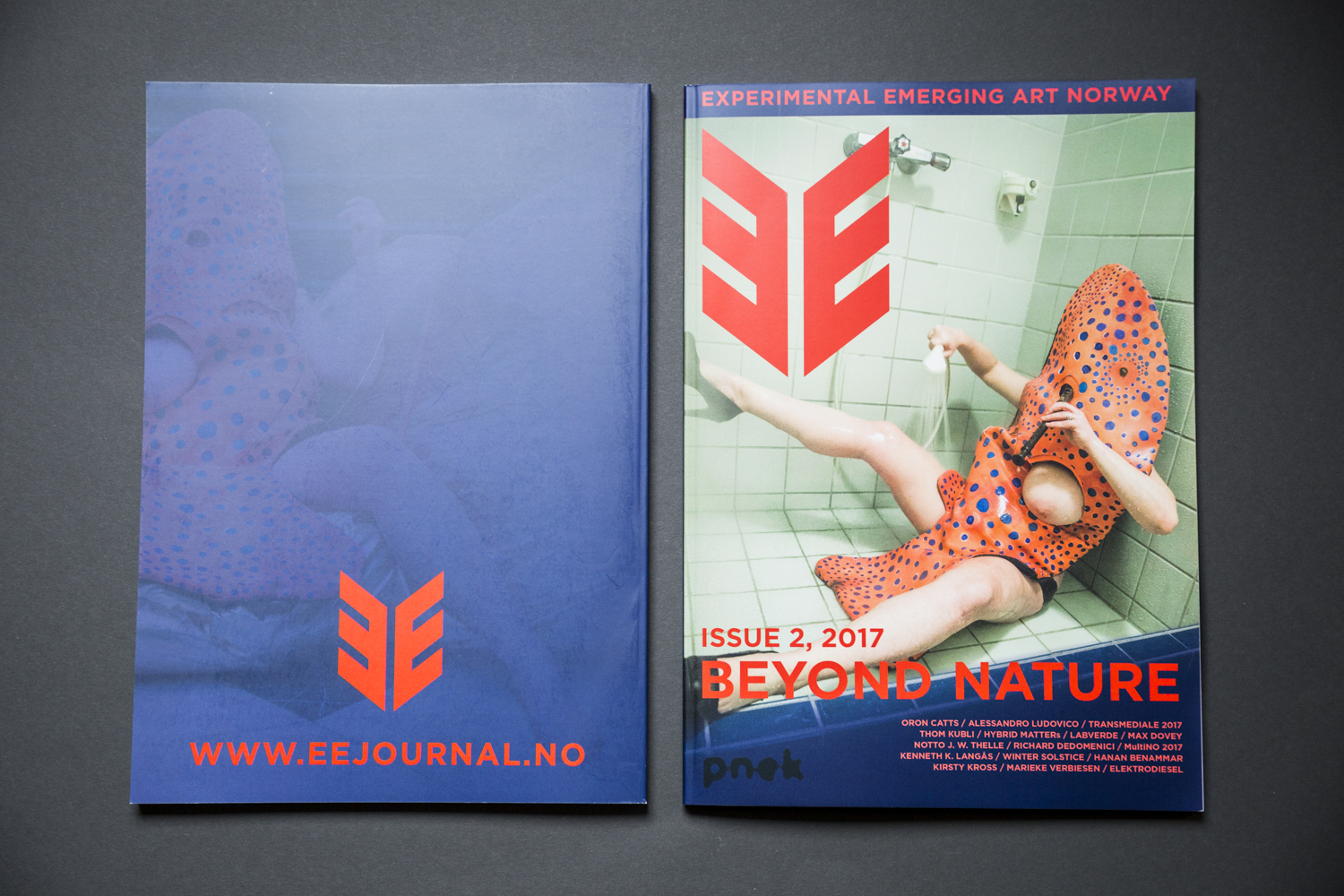EE #2, 2017: Beyond Nature
Nature is no thing natural. Our definitions of nature borrow too much from theology (Bruno Latour). Nature is no thing new, yet always novel as we create and re-create it through and for our concepts of it. Nature is dark, infected by our even darker desires and hyperbole fantasies of a hypothetically ‘natural condition’ (Timothy Morton). What is the role of the artist in the Anthropocene? If not to destabilize nature as some thing natural? If nature does not exist, the arts is a playground to experiment with it. Dissect and recreate it. In twisted, dangerous and dark ways that challenge society’s need for a superficial consensus of conform group-think. Undoing ‘nature’ might make art bad and artists be bad guys. That is good. As otherwise someone else will be the genuinely bad guys. (Oron Catts) Given that role, how much are artists willing to sacrifice? (Kirsty Kross, p. 80) Or will they sell their souls? (Catts, p. 6) Most artists would like to change the world into a better place. But most of all they want to change it. (Richard DeDomenici, p. 40) Thus putting ethics into the forefield of art.
With this as its backdrop, EE #2 moves Beyond Nature, investigating experimental and emerging ways of understanding as well as making art/nature. This issue visits not just hybrid, but also parasitical ways of doing art in times of danger and apocalyptic visions. In the current ecological and socio-political crisis, the function of the artist emerges as more critical than ever. The artists represented in issue #2 respond to the crisis through different forms and expressions. Some, like Kenneth K. Langås (p. 56), through extremely physical music, others physically exhaustive like Kirsty Kross in her cross-species performance (p. 80), or going naked as in Max Dovey’s striptease algorithm (p. 36), and collectively artists organize themselves in world class symposia and international forums such as Transmediale (p. 18) and HYBRID MATTERs (p.10).
Emergent is also the continued employment of new technologies, science and knowledge to create art. High-Tech and digital technologies have – still to the amazement of many- become a crucial part of art making. It is not going to be less in the future. The experimental arts are moving beyond mere representations, contributing hard-core knowledge to the world. As Oron Catts, the legendary bioart pioneer, frames it in his interview: some artists go beyond imagining these speculative futures, they are engaging in the hands-on actuality.
Like art, it is not about what the world is, but all it can be. EE consequently goes Beyond Nature to further explore that experimental attitude so urgently needed.
Stahl Stenslie
VIEW THE FULL ISSUE AS PDF:
PDF (DOUBLE-PAGE VIEW)
PDF (SINGLE-PAGE VIEW)

